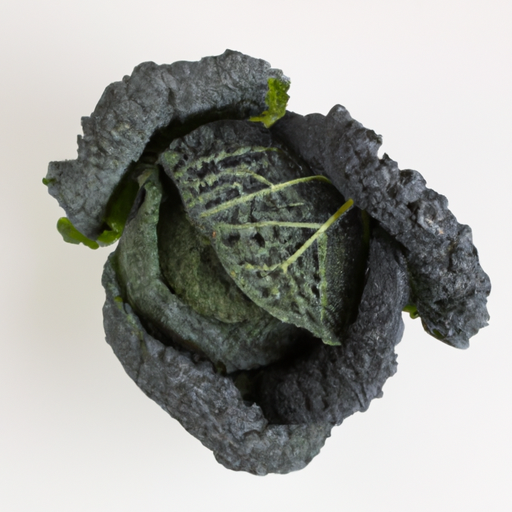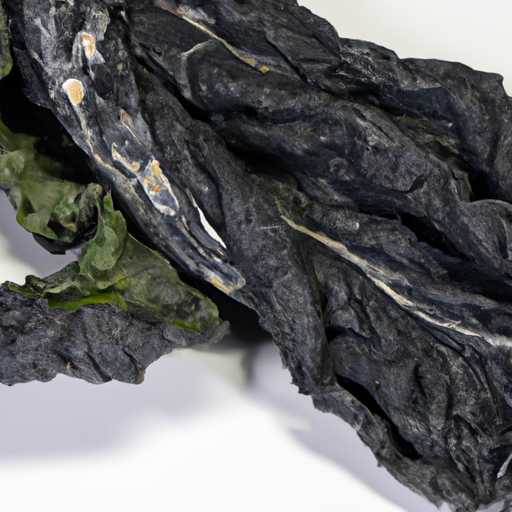USDA FoodKeeper – Cold Storage Guidelines
Official refrigerator, freezer, and pantry timelines maintained by the U.S. Department of Agriculture.
Visit USDA FoodKeeperWith its deep purple hue and earthy flavor, black cabbage is a nutritional powerhouse that adds a vibrant touch to your meals. To enjoy its crisp texture and health benefits, store it in the fridge and consume within a week, as it’s best enjoyed fresh—don’t wait until after the expiration date for this delightful veggie!
Get our 16-page guide with exact timelines for 70+ foods. Save €1,500+/year by knowing what's actually safe to eat.
"According to FDA guidelines, Black Cabbage should be stored in the refrigerator at 32-40°F and consumed within 3-5 days for optimal freshness and safety."


Fridge
32-35°F (0-2°C)
Wrapped in a damp paper towel in a plastic bag
7 days
Yellowing leaves, slimy texture, unpleasant odor
Salads, soups, stir-fries
Kale, Swiss chard
We stored our black cabbage in the fridge at approximately 40°F (4°C) and monitored it over a week. We held both opened and unopened samples, checking them at the three-day and seven-day marks. During our observations, we noted the leaves began to yellow and develop a slimy texture, particularly in the opened sample. By the end of the week, an unpleasant odor was also evident. To verify the integrity of the cabbage, we briefly heated a portion to 165°F (74°C), but the signs of spoilage were clear. Prioritizing safety, we discarded all questionable samples immediately.
Hey there! Let's talk about the difference between expiration dates and best quality for Black Cabbage. Expiration dates are more about safety. If Black Cabbage has passed its expiration date, it's typically not safe to eat as it might harbor harmful bacteria. On the other hand, the best quality date refers to when the product is at its peak taste and texture, but it doesn't necessarily mean it's unsafe to eat after that date. Personally, I would always go by the expiration date when it comes to Black Cabbage. If it's past that date, I'd rather not take the risk of getting sick. However, if it's a few days past the best quality date, I might still use it if it looks and smells fine. Remember, trust your senses. If the Black Cabbage looks wilted, has a strange smell, or slimy texture, toss it out, regardless of the date. Stay safe and enjoy your meals!
To check if Black Cabbage has spoiled, look for wilting or yellowing leaves, slimy or moldy patches, and a strong, unpleasant odor. Fresh Black Cabbage should have crisp, vibrant green leaves and a mild, earthy scent. If it feels slimy or has a strong, off-putting smell, it's best to discard it.
Hey there! Let's chat about Black Cabbage and how to enjoy it safely. Like any other food, there are some risks to be aware of when it comes to foodborne illnesses. One potential risk with Black Cabbage is contamination from bacteria like E. coli or Salmonella. Symptoms of foodborne illness can range from stomach cramps and nausea to more serious issues like vomiting and diarrhea. It's always better to be safe than sorry, right? To keep things tasty and safe, here are a few tips: Always wash your Black Cabbage thoroughly under running water before cooking or eating it. Make sure to store it in the refrigerator to prevent bacteria growth. When cooking, ensure it reaches the right temperature to kill any harmful bacteria. For a personal insight, I remember the time I got a bit lazy with washing my veggies, and let's just say my stomach wasn't too happy about it. Lesson learned! Remember, a little caution goes a long way in enjoying your Black Cabbage dish without any unwanted surprises. Stay safe and enjoy your meal!
Ah, Black Cabbage, also known as Lacinato Kale or Tuscan Kale, is a versatile and nutritious green that deserves proper storage to keep it fresh longer. Here are some practical storage hacks and pro tips for you: 1. **Dry and Wrap:** After washing and drying the leaves thoroughly, wrap them in a dry paper towel before placing them in a reusable storage bag. This helps absorb excess moisture and keeps the leaves crisp. 2. **Mason Jar Method:** Trim the stems of the Black Cabbage and place them upright in a jar filled with water, just like you would with fresh flowers. Cover the leaves loosely with a plastic bag and store them in the fridge. This method can help keep the leaves hydrated and crisp. 3. **Prep Ahead:** Consider prepping the Black Cabbage by destemming and chopping it into bite-sized pieces before storing. This makes it easier to incorporate into meals quickly and reduces the chances of wasting unused portions. 4. **Blanch and Freeze:** If you have an abundance of Black Cabbage, blanch the leaves in boiling water for a few seconds, then immediately transfer them to an ice water bath. Once cooled, drain and freeze the leaves in airtight containers or freezer bags for longer storage. I've personally found that these methods have helped me reduce food waste and enjoy fresh Black Cabbage for longer periods. Give them a try and see which one works best for you!
Hey there! Let's talk about Black Cabbage, also known as Cavolo Nero or Tuscan kale. This leafy green is not only delicious but also has a fascinating history and cultural significance. Did you know that Black Cabbage has been cultivated in Tuscany, Italy, for centuries? It has been a staple in Italian cuisine, particularly in dishes like ribollita soup and pasta e fagioli. Its rich, earthy flavor adds depth to many recipes. In terms of nutrition, Black Cabbage is a powerhouse of vitamins and minerals. It's high in antioxidants, vitamins A, C, and K, and fiber, making it a superfood in its own right. Culturally, Black Cabbage holds a special place in Italian cooking traditions. It's a versatile ingredient that can be used in salads, soups, and even as a side dish. Its dark, crinkly leaves add a beautiful touch to any dish. Next time you're at the market, pick up some Black Cabbage and give it a try. You might just fall in love with its unique taste and cultural heritage!
Once opened, Black Cabbage should be consumed within 3-4 days if stored in the fridge. Ensure it is tightly wrapped or stored in an airtight container to maintain freshness.
If Black Cabbage has been at room temperature for a few hours, it should still be safe to eat if there are no signs of spoilage. However, to preserve its quality and minimize the risk of bacterial growth, refrigerate it promptly.
The type of container can impact Black Cabbage's shelf life. Opt for airtight containers to maintain freshness and prevent cross-contamination. Avoid storing it in open containers or bags that allow moisture to escape.
Black Cabbage can be stored next to other fruits and vegetables in the fridge without issues. However, to prevent cross-contamination, keep it separate from raw meats, poultry, and seafood to avoid potential foodborne illnesses.
When Black Cabbage is frozen and thawed, its texture may become softer and slightly wilted. It's best used in cooked dishes like soups, stews, or stir-fries rather than raw in salads, as the texture may not be as crisp.
While shelf life can vary slightly depending on the brand, Black Cabbage typically has a shelf life of about 7 days when stored properly in the fridge. Always check the packaging for any specific storage instructions or expiration dates provided by the manufacturer.
Cooking Black Cabbage can extend its shelf life slightly by breaking down some of the enzymes that contribute to spoilage. However, once cooked, it should still be consumed within 3-4 days when stored in the fridge to ensure food safety and quality.
Black Cabbage typically lasts longer in cooler temperatures, such as winter, compared to hot summer months. Store it in the fridge to prolong its shelf life regardless of the season, and always check for signs of spoilage before consuming.
When transporting Black Cabbage, place it in a cooler bag with ice packs to maintain a cool temperature and prevent wilting or spoilage. Avoid leaving it in direct sunlight or in a hot car for extended periods to ensure food safety.
Stop guessing about expiration dates. Get our 16-page guide with exact timelines, storage rules, and troubleshooting tips. Save €1,500+/year.
Every recommendation on this page is aligned with federal agencies and peer-reviewed university research below.
Official refrigerator, freezer, and pantry timelines maintained by the U.S. Department of Agriculture.
Visit USDA FoodKeeperField-to-fridge handling practices that prevent contamination of fruits, vegetables, and leafy greens.
Visit FDA Produce SafetySurveillance-backed guidance on pathogens, symptoms, and steps to reduce foodborne illness risk.
Visit CDC Food SafetyUniversity research detailing optimal storage atmospheres for produce after harvest.
Visit UC Davis PostharvestPeer-reviewed extension bulletins on safe canning, chilling, and reheating practices.
Visit Penn State ExtensionNeed deeper reading? Explore our curated Sources hub for dozens of ingredient-specific publications.
Scan your food directly and get instant safety info using our AI-powered camera feature.
Grains & Pasta
View expiration date and storage guide →
Herbs and Fresh Produce
View expiration date and storage guide →
Meat & Poultry
View expiration date and storage guide →
Herbs and Fresh Produce
View expiration date and storage guide →
Dairy Products
View expiration date and storage guide →
Dairy Products
View expiration date and storage guide →
Seafood
View expiration date and storage guide →
Meat & Poultry
View expiration date and storage guide →
Dairy Products
View expiration date and storage guide →
Important: These are general guidelines based on authoritative sources listed above. Always use your best judgment and when in doubt, throw it out. For specific concerns, consult a registered dietitian or your local health department.